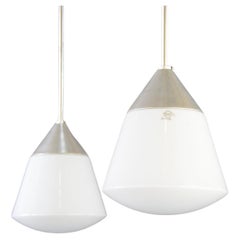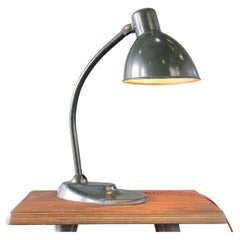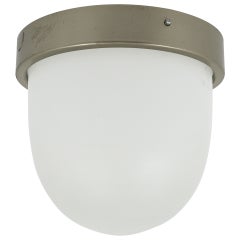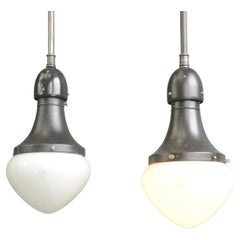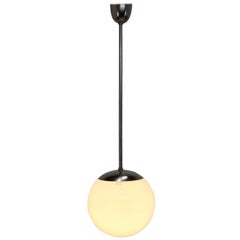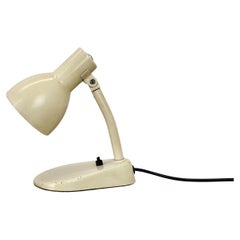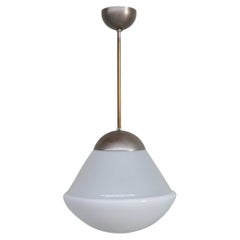Kandem
Among the earliest lighting manufacturers in Germany, Kandem Leuchten GmbH embodies the progressive philosophy of the Bauhaus school.
In the early 20th century, the company’s popularity skyrocketed as a result of its innovative engineering and forward-looking visual design. Kandem popularized many features and forms that prominently characterize the lighting designs of today — such as the bell-shaped head and forward-foot base, which are common attributes of many table lamps.
German mechanics and good friends Max Körting and Wilhelm Mathiesen founded Kandem Leuchten GmbH as Körting and Mathiesen (K&M) in 1889. The two had developed a bond while working at a company in Leipzig and quickly found that they shared a similar professional vision with respect to design. They decided to go into business together in the then-fledgling field of electrical engineering.
Körting and Mathiesen set up shop and moved forward on their inaugural idea — creating a new type of arc lamp. To build capital for their project, the duo produced small electrical pieces such as light switches and doorbells that sold as quickly as they could make them. When they completed their arc lamp, it sold much more quickly than they expected. In order to increase their production, Körting and Mathiesen bought property and built a plant just outside of Leipzig. By this time the partners had rebranded the company as Kandem, which is an abbreviated combination of their surnames. However, colleagues and peers continued to refer to the company as Körting and Mathiesen.
In the 1920s, Kandem involved itself heavily in the Bauhaus design school, buying designs and enlisting the talents of the facility’s top artists at the student ateliers in Dessau — which was home to the institution following its move from Weimar, where Walter Gropius founded the school in 1919. Kandem partnered with notable Bauhaus product designers Hin Bredendieck and Marianne Brandt. After emigrating to the United States during the late 1930s, Bredendieck taught at the Institute of Design in Chicago and would later establish the Department of Industrial Design at Georgia Tech. Collectors celebrate Brandt for her boundless creativity and innovation in household products and accessories — many of which inspire designers to this day.
Kandem’s relationship with Bauhaus ended in 1933 when the school closed. The manufacturer continued to operate outside of Leipzig well into the mid-20th century, producing some of the most celebrated pieces in mid-century modern lighting design. Kandem now operates in Diez, Germany, as a subsidiary of the Dr. Fischer Group.
On 1stDibs, explore the vast array of Kandem table lamps, pendants and wall lights.
| Average Sold Price |
| $709 |
| Styles |
| Materials |
| Related Creators |
1930s German Bauhaus Vintage Kandem
Opaline Glass
1930s German Bauhaus Vintage Kandem
Steel
Early 20th Century German Bauhaus Kandem
Opal, Aluminum, Brass
1930s German Bauhaus Vintage Kandem
Opaline Glass
1930s German Bauhaus Vintage Kandem
Metal
1930s German Bauhaus Vintage Kandem
Metal
Mid-20th Century German Bauhaus Kandem
Metal
1930s German Vintage Kandem
Metal
Kandem Sale Prices
| Sold Date | Sold Price | Category | Material | Creation Year | ||||||
|
| $709 |
Average sold price of items in the past 12 months |
| $600-$818 |
| Sold price range of items in the past 12 months |
